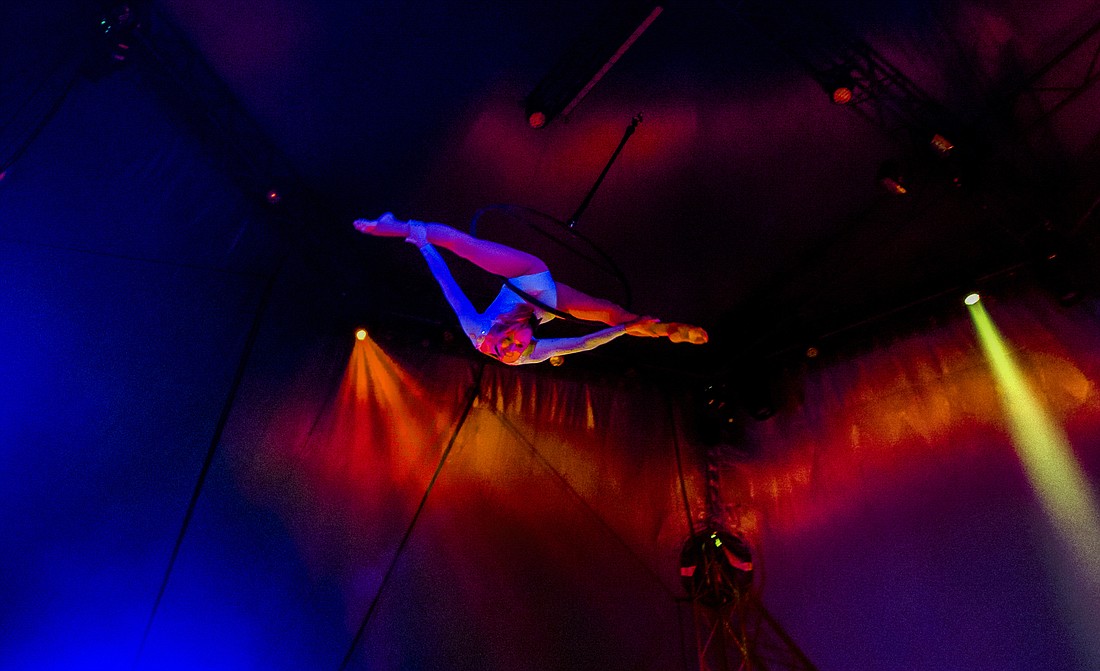- January 22, 2025
-
-
Loading

Loading

In Sarasota, the circus doesn’t just come to town. It made the town. Sarasota was the winter quarters of the Ringling Bros. and Barnum & Bailey Circus until 1936, when it moved to Venice. But many families of circus artists stayed put in the decades that followed. Growing up here, it seemed like half my classmates spent their free time riding unicycles or practicing on the trampoline. It’s a beautiful history.
But Pedro Reis wants this circus heritage to be more than history.
That’s the reason Reis and his wife, Dolly Jacobs, co-founded the Circus Arts Conservatory. The organization keeps the circus legacy alive, and the “Summer Circus Spectacular” is the pièce de résistance.
“When we say ‘spectacular,’ we mean it,” Reis said. “It’s our love letter to the whole community.”
Think five international circus acts packed into one sensational hour. It’s a really big show.
Here’s a glimpse at this year’s spectacular talent.
Her aerial artistry defies gravity with the power of balletic dance. She performs in a lyra gracefully and seemingly weightless. “I’m alone up there, but it’s not just me,” she said. “My act depends on music, lighting and costume to create a sense of character. The whole team comes together, and then the magic happens.”
The ringmaster is a talented actor and no stranger to the circus. He’s the creative director of the Sailor Circus Academy.
This husband-and-wife duo (Dick Monday and Tiffany Riley) has been clowning around for years. Their past stages include Lincoln Center, Carnegie Hall, Lone Star Circus and children’s wards in public hospitals to use their clowning powers for good.
She set three Guinness World Records for spinning the most hula hoops simultaneously. It’s easy to see why. She spins the hoops until they’re motion blurs of color surrounding her like the rings of Saturn. The effect is hypnotic, psychedelic and indescribably beautiful.
This graceful performer is a former gymnast and ballet dancer and a veteran of Cirque du Soleil. It takes all that and nerves of steel to master the art of hand-balancing. Step by step, he builds a teetering platform of improbable elements — blocks, canes and ladders. He rests on top upside down, and he supports his weight with his hands while continuing to build the platform. It’s like a game of Jenga with a human element. “People in the audience usually gasp,” Reis said. “He’ll put you on the edge of your seat.”
He’s an artist of the rola bola. His act involves standing on a balance board on top of a cylinder and then adding more boards and more cylinders until he’s perched at precarious heights.
“I grew up in a circus family,” he said. “My parents introduced me to the rola bola when I was 12. … I practiced and practiced then gave up. When I was 16, I decided to go back to it. This time, I didn’t give up until I was good at it.”
The acts are all world-class, but they’re more than passing entertainment. The performers I spoke to were all passionate about the legacy of the circus. They celebrate its past, but they’re also sowing the seeds of its future.
“Mastering the circus arts takes courage and dedication, but it’s not impossible,” Rebkovets said. “When we perform on stage, we’re showing that it’s possible. … Maybe one kid said, ‘I want to do that, too.’ The next generation of the circus starts there.”
As further proof of their humanity, the circus artists greet the audience in the lobby after every show.
“They don’t just pack up and go home,” Reis said. “You can say hello, get their autographs or take a photo. It’s really a magic moment.”